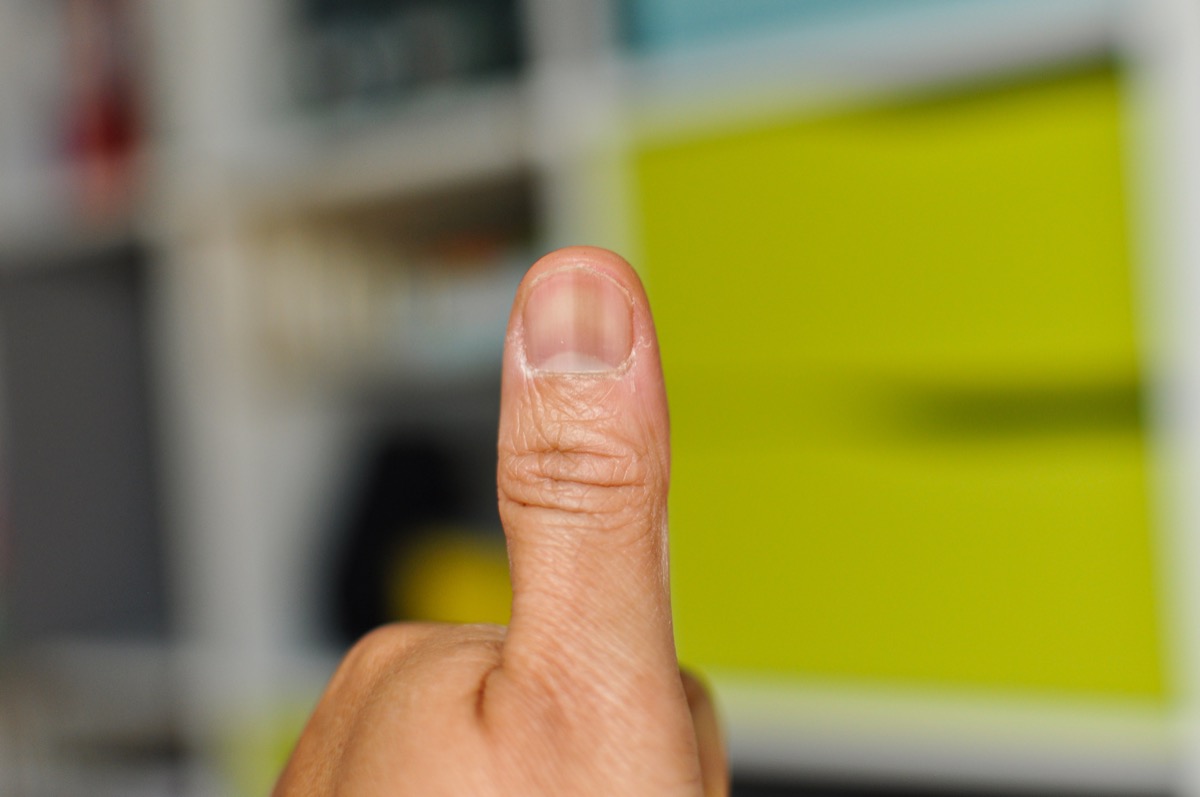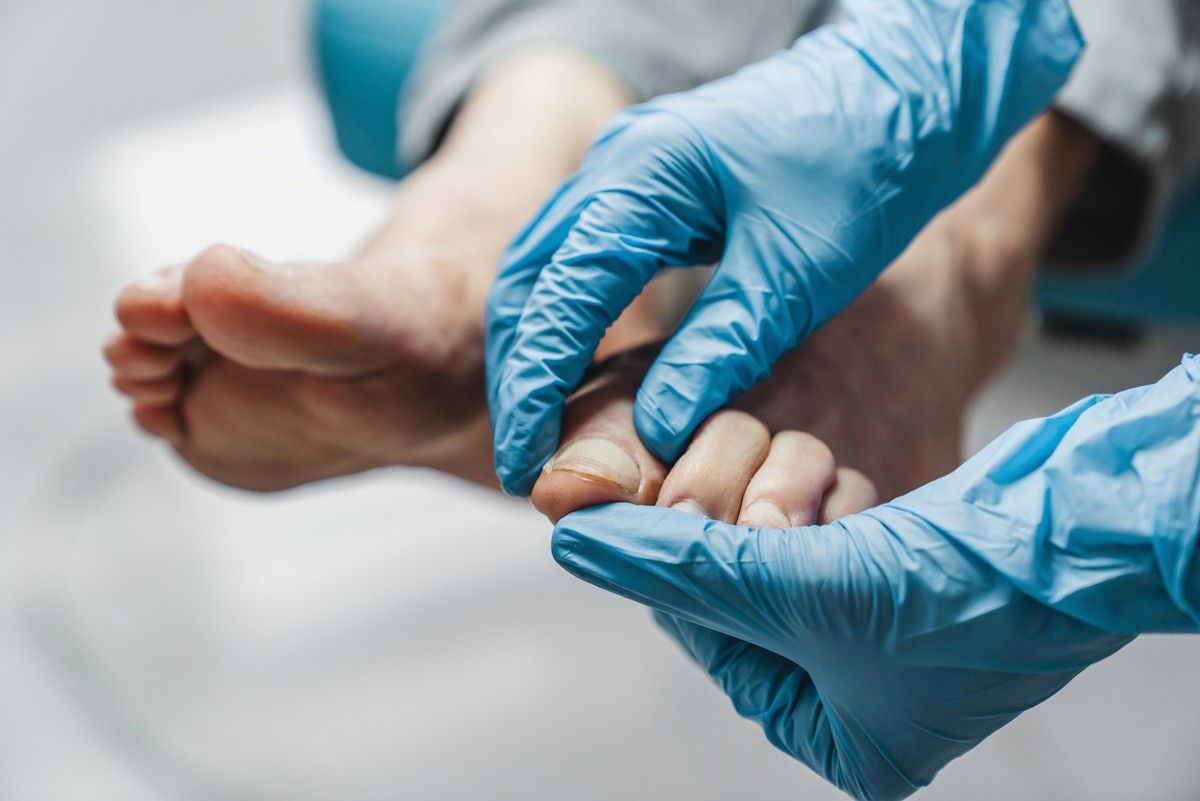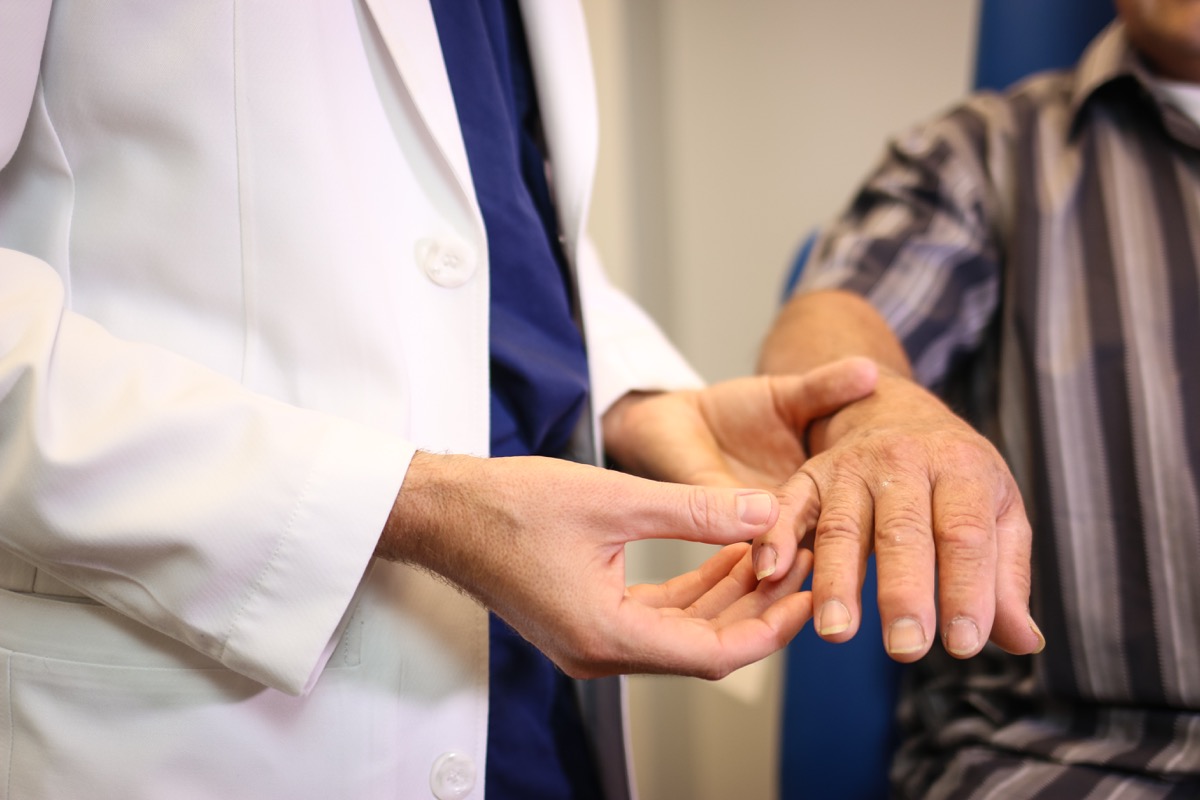RELATED: If These 2 Body Parts Hurt You, It Could Be a Sign of Cancer, Study Says. A dark streak on your nail, known as melanonychia, could be a warning sign of melanoma, Skylar Souyoul, MD, a board-certified dermatologist, recently told the AAD. The dark streaks are usually vertical and tend to look like a “brown or black band in the nail,” Souyoul says, though they can range from light to dark. They are most likely to appear on the thumb or big toe of a person’s dominant hand or foot, but can appear on any nail. According to the National Center for Biotechnology Information, your thumb and big toe account for 75 percent to 90 percent of nail bed cancers, which are known as subungual melanoma. And this streak is often one of the first signs. “Early subungual melanoma often presents as longitudinal melanonychia,” wrote the authors of a 2016 study on the subject, published in the journal Australian Family Physician. “While subungual melanoma is a relatively rare condition compared to other skin cancers, it can lead to serious complications,” the experts at Healthline say. “Early detection and treatment is a must. It’s important to learn the signs of subungual melanoma so you can get help before the cancer spreads.” And for more important health news delivered right to your inbox, sign up for our daily newsletter. A sign of advanced melanoma could be when the skin around nails is darker in color, Souyoul says. It’s also important to be aware of lifting from the nail bed, which can occur in both fingers or toes—prompting nails to look longer. Nails that split down the middle or have a bump underneath are also warning signs of melanoma. Other symptoms can include “nail brittleness and cracking, or bleeding at the site of pigmentation,” Healthline notes. “Nail melanoma is often diagnosed at a more advanced stage than melanoma on the skin, making it more dangerous for your health,” Souyoul said. “If you notice any changes to your nails, including a new dark band on your nail, make an appointment to see a board-certified dermatologist.” As Healthline pointed out, melanoma on the extremities is the rarest subtype of the skin cancer. It accounts for less than 5 percent of all melanomas, Vishal Patel, assistant professor of dermatology at the George Washington University School of Medicine & Health Sciences in Washington, D.C., told Today in 2019. “But it makes up about a third of all the melanomas that African Americans, Indians, Asians and other people with darker skin develop, which is a ten-fold increase compared to the general population,” the outlet explained.ae0fcc31ae342fd3a1346ebb1f342fcb Souyoul warns that a personal or family history of melanoma, or nail trauma could also be risk factors. According to Rachel Nall, MSN, CRNA, of Medical News Today, having an immunosuppressive disorder, such as HIV, can also make you more likely to develop nail melanoma. “When found early, melanoma—even on the nails—is highly treatable,” Souyoul said. The authors of the aforementioned 2016 Australian Family Physician study agree, noting that “detecting subungual melanoma at an early stage potentially has a great impact on a patient’s likelihood of cure.” Souyoul says “the best way to find skin cancer on your nails early, when it’s most treatable, is to know what to look for and regularly check your nails.” The AAD has a helpful video that can guide you through the process of checking your nails for melanoma. The good news is, the five-year survival rate for people who discover melanoma in its early stages—before it spreads to the lymph nodes—is 92 percent, according to the AAD. RELATED: If You Notice This on Your Skin, You Could Be at Risk for 13 Cancers.



